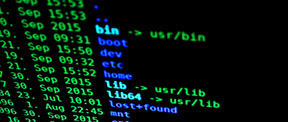**Exploring the Linux Command: locate**
In the vast landscape of Linux commands, there are countless tools that empower users to navigate their systems and perform a wide range of tasks. Among these commands, locate stands out as a powerful tool for quickly finding files based on their names.
**Understanding locate**
Locate is a command-line utility that uses a pre-built database to search for files and directories on a Linux system. The database is updated regularly, typically at scheduled intervals, to keep track of the locations of files. This makes locate a much faster alternative to the find command, which searches through the entire file system in real-time.
**Syntax**
The syntax for the locate command is as follows:
“`
locate [options]
where:
* **options:** Various options can be used to control the search behavior, such as case-sensitivity, the database to use, and the number of results to display.
* **pattern:** The pattern to search for. This can be a partial or full filename, directory name, or path.
**Example Uses**
Locate can be used in a variety of scenarios, including:
* **Finding lost files:** If you’ve misplaced a file, you can use locate to quickly locate its current location. For example:
“`
locate lost_file.txt
“`
* **Searching for files of a specific type:** You can use locate to find all files that match a certain extension or pattern. For example, to find all PNG image files:
“`
locate *.png
“`
* **Locating files in a specific directory:** You can specify a directory to search within using the -d option. For example, to find all files with the name “readme” in the /tmp directory:
“`
locate -d /tmp readme
“`
* **Excluding directories from the search:** You can use the -x option to exclude certain directories from the search. For example, to exclude the /home directory from the search:
“`
locate -x /home lost_file.txt
“`
**Tips for Using locate**
* The locate database is updated periodically, so it may not always contain the latest information. If you can’t find a file using locate, try running the command again after the database has been updated.
* Locate can be used in conjunction with other commands to narrow down your search results. For example, you can pipe the output of locate to grep to further filter the results.
**Conclusion**
The locate command is a powerful and time-saving tool for quickly finding files on a Linux system. By understanding its syntax and using it effectively, you can streamline your workflow and quickly locate the files you need.
